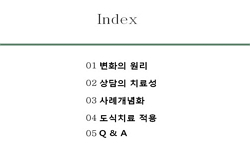The story of David and Goliath poses a question about which many remain intensely curious: under what conditions can the resourcefulness of an underdog overcome the institutionalized resources of the powerful? One instance that offers insight into th...
http://chineseinput.net/에서 pinyin(병음)방식으로 중국어를 변환할 수 있습니다.
변환된 중국어를 복사하여 사용하시면 됩니다.
- 中文 을 입력하시려면 zhongwen을 입력하시고 space를누르시면됩니다.
- 北京 을 입력하시려면 beijing을 입력하시고 space를 누르시면 됩니다.
https://www.riss.kr/link?id=T10545891
- 저자
-
발행사항
[S.l.]: Harvard University 2000
-
학위수여대학
Harvard University
-
수여연도
2000
-
작성언어
영어
- 주제어
-
학위
Ph.D.
-
페이지수
530 p.
-
지도교수/심사위원
Adviser: Theda Skocpol.
-
0
상세조회 -
0
다운로드
부가정보
다국어 초록 (Multilingual Abstract)
Most explanations of such events argue that the “time for change was right” or attribute success to the intervention of gifted charismatic individuals. Jenkins and Perrow's 1977 social movement classic, <italic>Insurgency of the Powerless</italic>, attributes the UFW's success to a favorable political opportunity structure, but does not explain why the UFW succeeded while its rivals failed, especially when they had access to far greater resources. The fact the UFW strategy worked does not explain why it alone devised such a strategy. And citing the “charismatic leadership” of Cesar Chavez does not explain how this leadership worked.
To explain this outcome—the UFW's success and the failure of its rivals—I compared organizational strategy. To explain differences in strategy I compared leadership teams that devised it, the structure of their organizations, and their pattern of interaction with the environment. Biographical data on leaders reveals systematic differences in their life experience, sociocultural networks, and repertoires of collective action. Organizational analysis reveals systematic differences in deliberative processes, accountability mechanisms, and resource flows.
Building on creativity theory, I argue that the likelihood a leadership team will devise effective strategy—its strategic capacity—depends on its motivation, access to salient knowledge, and heuristic processes. The strategic capacity of a leadership team will be greater if it includes insiders and outsiders to salient constituencies, those with strong and weak ties to these constituencies, and those who have learned diverse repertoires of collective action. Leaders will make the most of these attributes if they conduct regular, open, and authoritative deliberations, are accountable to multiple, salient constituencies, and draw their resources from them.
In sum, I explain the UFW's success over its rivals by differences in strategy, account for differences in strategy by how it was developed, and explain how it was developed in the interactions of leaders, organizations, and environment. Understanding strategic capacity can help explain how resourcefulness can compensate for lack of resources—or why David can sometimes win.
The story of David and Goliath poses a question about which many remain intensely curious: under what conditions can the resourcefulness of an underdog overcome the institutionalized resources of the powerful? One instance that offers insight into that question is the United Farm Workers' victory over the California growers in the labor struggles of the 1960s and 1970s. Despite recurrent opportunities since 1900, repeated attempts to unionize California agriculture had failed. Early in the 1960s, three organizations made another attempt: the AFL-CIO's Agricultural Workers Organizing Committee, the International Brotherhood of Teamsters, and the independent United Farm Workers. In the spring of 1966, however, it was neither the powerful Teamsters nor the AFL-CIO that won the first breakthrough, but the upstart United Farm Workers led by Cesar Chavez.
Most explanations of such events argue that the “time for change was right” or attribute success to the intervention of gifted charismatic individuals. Jenkins and Perrow's 1977 social movement classic, <italic>Insurgency of the Powerless</italic>, attributes the UFW's success to a favorable political opportunity structure, but does not explain why the UFW succeeded while its rivals failed, especially when they had access to far greater resources. The fact the UFW strategy worked does not explain why it alone devised such a strategy. And citing the “charismatic leadership” of Cesar Chavez does not explain how this leadership worked.
To explain this outcome—the UFW's success and the failure of its rivals—I compared organizational strategy. To explain differences in strategy I compared leadership teams that devised it, the structure of their organizations, and their pattern of interaction with the environment. Biographical data on leaders reveals systematic differences in their life experience, sociocultural networks, and repertoires of collective action. Organizational analysis reveals systematic differences in deliberative processes, accountability mechanisms, and resource flows.
Building on creativity theory, I argue that the likelihood a leadership team will devise effective strategy—its strategic capacity—depends on its motivation, access to salient knowledge, and heuristic processes. The strategic capacity of a leadership team will be greater if it includes insiders and outsiders to salient constituencies, those with strong and weak ties to these constituencies, and those who have learned diverse repertoires of collective action. Leaders will make the most of these attributes if they conduct regular, open, and authoritative deliberations, are accountable to multiple, salient constituencies, and draw their resources from them.
In sum, I explain the UFW's success over its rivals by differences in strategy, account for differences in strategy by how it was developed, and explain how it was developed in the interactions of leaders, organizations, and environment. Understanding strategic capacity can help explain how resourcefulness can compensate for lack of resources—or why David can sometimes win.











